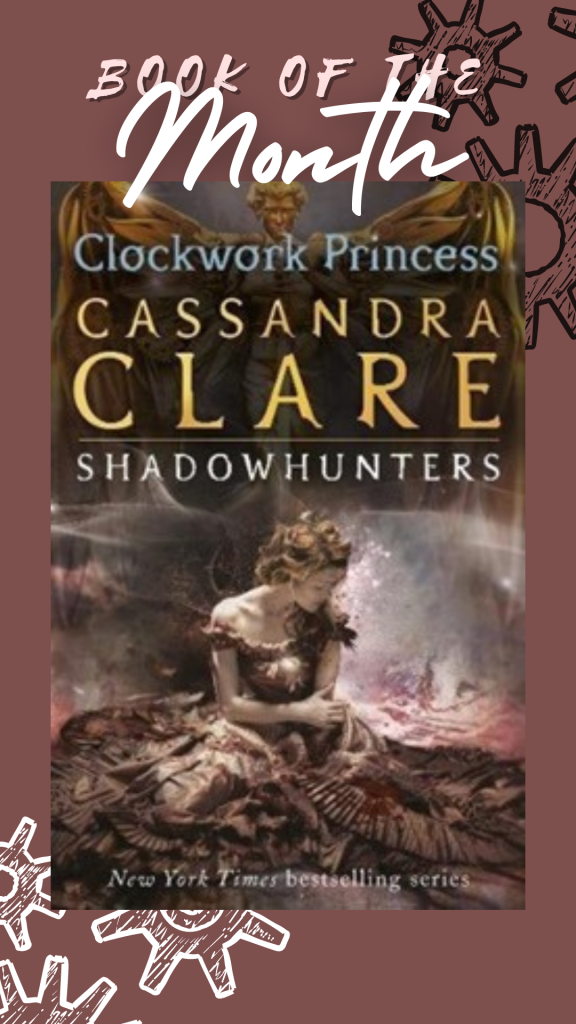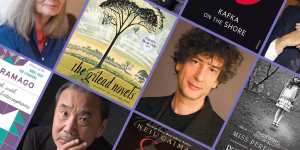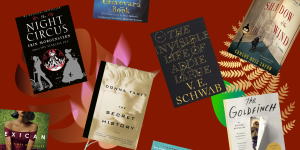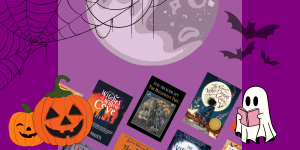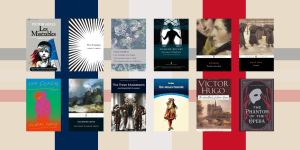In recent years, the way people engage with books has shifted, with some claiming reading is on the decline, while others argue it’s thriving more than ever.
Despite changes in technology and entertainment, books have remained a steady source of knowledge, comfort, and escape for many.
As we dive into the latest statistics, we’ll uncover whether books are becoming more or less popular and explore how reading habits have evolved in today’s fast-paced world.
The Rise and Fall of Book Sales Over the Years
Book sales have experienced both significant highs and lows over the decades, driven by various social, technological, and economic factors.
Historically, print books dominated the market, with steady growth throughout much of the 20th century.
However, the introduction of digital technology and changing entertainment trends began to impact sales, leading to fluctuations in the demand for traditional books.
Let’s dive deeper into how book sales have evolved.
Historical Data on Book Sales
Throughout the 20th century, books enjoyed consistent growth in sales, as they were one of the main forms of entertainment and education.
By the late 1990s and early 2000s, print sales started to plateau as technology advanced. The launch of e-readers, like the Kindle, in 2007 marked a significant shift, sparking a rise in digital book sales.
However, by the mid-2010s, e-book sales began to stabilize while print books saw a resurgence, highlighting the ever-changing landscape of the publishing industry.
Major Influences on Book Popularity
The popularity of books has been shaped by numerous factors, especially with the growth of digital media and social platforms.
The rise of streaming services, video games, and social media provided more entertainment alternatives, competing for people’s time.
However, platforms like BookTok, podcasts, and book blogs have helped revitalize interest in reading.
In particular, BookTok has been instrumental in driving book sales by making reading a popular and shared experience among younger audiences.
READ MORE: 9 BookTok Books That Are Actually Worth Their Hype
Comparing Book Sales
When comparing past decades to today’s book market, there’s been a noticeable shift in how people purchase and consume books.
In the 1990s, print sales were robust, but today’s landscape is more fragmented with a mix of print, e-books, and audiobooks.
Print sales remain strong, but audiobooks have surged in popularity, reflecting a shift in reader preferences.
Today’s trends indicate that while books are still valued, the way people engage with them has dramatically evolved, with technology playing a key role in this transformation.
Impact of Technology on Reading Habits

Technology has profoundly shaped how people consume books, with the rise of e-books, audiobooks, and digital devices changing traditional reading habits.
While print books remain a popular choice, digital formats have expanded the ways people engage with literature.
The influence of smartphones, tablets, and reading apps has created more flexible options for readers, who can now enjoy books anywhere and anytime, in formats tailored to their lifestyles.
E-Books and Audiobooks vs. Print Books
The introduction of e-books and audiobooks has revolutionized the book industry, offering readers more accessible and convenient formats.
E-books, initially hailed as the future of reading, saw explosive growth after the release of Amazon’s Kindle in 2007. By 2013, e-books accounted for nearly a third of all book sales, but their growth has since slowed.
In 2024, e-books represent about 16% of total book sales, according to the Association of American Publishers (AAP).
While e-books offer portability and easy access to a vast library of titles, many readers still prefer the tactile experience of print books.
Audiobooks, on the other hand, have seen a remarkable rise in popularity in recent years.
In 2024, audiobooks accounted for about 10% of the book market, a significant increase from previous years.
The growing popularity of platforms like Audible and Libro.fm, as well as the integration of audiobooks into services like Spotify, have contributed to this surge.
Audiobooks offer a hands-free way to enjoy literature, appealing especially to busy individuals who can listen while commuting, exercising, or multitasking.
Though print books continue to dominate the market, both e-books and audiobooks have carved out substantial niches, offering readers a variety of ways to experience stories.
How Smartphones, Tablets, and Devices Have Influenced Reading
The widespread use of smartphones, tablets, and e-readers has significantly influenced reading habits, making books more accessible than ever before.
A 2024 Pew Research study shows that over 52% of U.S. adults have read an e-book or audiobook using their mobile device within the last year.
Smartphones, with their constant availability, allow readers to engage with books in small bursts, often during breaks, commutes, or waiting times.
Tablets, with larger screens, offer a more immersive experience, allowing readers to comfortably enjoy e-books or comics.
These devices have also encouraged shorter reading formats, with people more likely to read articles, essays, and short stories over full-length novels in digital formats.
This has created an interesting shift in how people engage with written content, as short, snackable reads become more common, driven by the convenience of mobile devices.
Despite the growing use of digital devices, the tactile appeal and longer reading sessions associated with print books remain favored by many readers, keeping both formats relevant.
The Role of Reading Apps and Platforms
Reading apps and digital platforms have emerged as powerful tools, helping to connect readers and provide personalized experiences.
Apps like Kindle, Apple Books, and Google Play Books have made reading more convenient, offering vast libraries at the touch of a button.
Additionally, subscription services like Scribd and Audible allow users to access multiple books for a monthly fee, expanding their reading options.
In recent years, social media platforms like BookTok (on TikTok) and Goodreads have transformed reading into a community-driven activity.
BookTok, in particular, has played a key role in reviving interest in specific books and genres, with viral recommendations driving sales.
Meanwhile, Goodreads offers a platform for users to track their reading, rate, and review books, and discover recommendations based on their preferences.
These apps and platforms have not only made reading more accessible but have also fostered a sense of community among readers.
With personalized recommendations, reading challenges, and social sharing features, these platforms have made reading a more interactive and social experience, bridging the gap between traditional and digital formats.
Reading Habits During Major Global Events

Major global events have a profound impact on people’s reading habits, often shifting the types of books they seek and how much time they devote to reading.
One of the most significant events in recent history—the COVID-19 pandemic in 2020—sparked major changes in book consumption.
As lockdowns and quarantines kept people confined to their homes, reading became both a form of escapism and a tool for coping with uncertainty.
These global disruptions not only boosted book sales but also influenced the genres and themes that resonated most with readers during such turbulent times.
READ MORE: 11 Best Mental Health Books To Read
The Impact of the 2020 Pandemic on Book Sales
The 2020 pandemic created unprecedented challenges across industries, but the book market saw a surprising resurgence.
With much of the world stuck indoors, people turned to books as a way to pass the time and find solace.
In the U.S., book sales increased by 8.2% in 2020, according to NPD BookScan, with notable growth in fiction, non-fiction, and children’s books.
The digital realm also saw a boost, with e-book and audiobook sales climbing, particularly in genres like self-help, mental health, and escapist fiction.
Audiobooks, in particular, grew by 16% as readers sought ways to engage with stories while performing other activities at home.
Print book sales, despite initial fears of a decline, also saw gains.
The demand for physical books surged as people sought tangible forms of entertainment, with some readers noting that the tactile experience of holding a book provided comfort during an otherwise uncertain time.
Online book retailers like Amazon and independent bookstores offering delivery thrived, while traditional brick-and-mortar stores struggled.
Overall, the pandemic led to an increase in reading across demographics, especially among those who had previously felt they didn’t have time to read.
Trends During Quarantine and Lockdown Periods
During quarantine and lockdowns, people’s reading preferences shifted, reflecting their desire for both distraction and self-improvement.
Escapist genres, such as fantasy, romance, and historical fiction, saw significant growth.
Books like The Midnight Library by Matt Haig and The Invisible Life of Addie LaRue by V.E. Schwab became viral hits during this period, offering readers an escape from the harsh realities of the world.
On the other hand, non-fiction genres like self-help, personal development, and mental health also surged in popularity.
Readers turned to books that provided tools for managing stress, anxiety, and uncertainty.
Titles like Atomic Habits by James Clear and The Body Keeps the Score by Bessel van der Kolk saw substantial increases in sales, as people sought to better understand their emotional and mental well-being.
Children’s books also saw notable growth, as parents looked for ways to entertain and educate their children during school closures.
Educational and activity books became popular choices, helping parents keep their kids engaged while at home.
This increase in children’s book sales reflected a broader trend of families embracing reading as a key activity during lockdown.
How Global Events Shape People’s Reading Choices
Global events like pandemics, economic crises, and political unrest often drive readers toward certain genres and topics that reflect their desire for either information or escape.
In times of crisis, readers are more likely to gravitate toward books that offer them coping mechanisms, hope, or distraction from current events.
For example, the 2020 pandemic saw a rise in dystopian and post-apocalyptic fiction, as readers found comfort in stories that reflected their fears and anxieties.
At the same time, global events also drive interest in books that help people make sense of the world.
During the pandemic, there was a noticeable increase in sales of non-fiction titles related to science, medicine, and pandemics, such as The Great Influenza by John M. Barry and Spillover by David Quammen.
People sought knowledge to better understand the unfolding crisis and the history of similar events.
Overall, global events have a long-lasting effect on reading habits, with crises like the pandemic acting as a catalyst for change in both what people read and how much time they devote to reading.
Whether seeking escapism, self-improvement, or a deeper understanding of the world, readers often turn to books in times of upheaval, highlighting the enduring role that literature plays in helping people navigate challenging times.
Demographic Insights: Who’s Reading More?

Reading habits vary widely across different demographic groups, shaped by factors such as age, gender, and geography.
As the ways people engage with books evolve, demographic data provides valuable insights into who is reading more, what they’re reading, and how their preferences differ based on various social and cultural influences.
Understanding these trends can shed light on the shifting landscape of the book industry and offer clues about its future trajectory.
Age Groups and Reading Habits
Reading preferences and habits differ significantly across age groups, with younger and older generations displaying distinct trends.
According to a 2024 study by Pew Research, older adults (ages 65 and above) tend to favor print books, with over 72% preferring physical copies.
This generation has grown up with print media and tends to maintain traditional reading habits.
Additionally, older readers are more likely to engage in longer, uninterrupted reading sessions, often favoring genres like historical fiction, biography, and literary fiction.
Younger generations, particularly millennials (ages 25-40) and Gen Z (ages 18-24), are more inclined toward digital formats, with 57% of millennials reading e-books or listening to audiobooks in the past year.
Audiobooks are particularly popular with these groups, as they offer a way to consume books while multitasking.
Gen Z readers, in particular, are driving the resurgence of young adult (YA) fiction, often discovering new books through platforms like BookTok and social media.
Interestingly, teenagers (ages 13-17) show a renewed interest in reading, especially in fantasy and romance genres, thanks to viral trends on platforms like TikTok.
The blending of social media and reading has introduced books to this younger demographic in a way that resonates with their digital-first lifestyle.
Despite the pull of digital entertainment, the desire for escapist fiction keeps many younger readers engaged with books.
Gender Differences in Reading Trends
When it comes to gender, there are clear differences in reading habits and preferences.
Historically, women have been more active readers than men, and this trend continues today.
A 2024 survey by the National Endowment for the Arts (NEA) revealed that 65% of women had read at least one book in the past year, compared to 55% of men.
Women are more likely to read fiction, especially in genres like romance, historical fiction, and mystery.
Female readers are also driving the popularity of genres like psychological thrillers and contemporary women’s fiction.
Men, on the other hand, are more inclined to read non-fiction, with genres such as history, politics, science, and biographies being particularly popular.
However, men are also increasingly drawn to audiobooks, with over 60% of male respondents in a recent Audible survey stating that they prefer listening to books over reading print.
Audiobooks’ multitasking potential appeals to men who consume books while commuting, working out, or doing household chores.
While the gap between men and women in terms of reading frequency persists, the growth of digital formats has somewhat narrowed this divide, as more men adopt audiobooks and e-books.
Additionally, genre preferences can vary across age and cultural backgrounds, with younger men showing a growing interest in science fiction, fantasy, and graphic novels.
Global vs. Regional Reading Statistics
Reading habits and preferences can also vary significantly depending on geography.
In 2024, countries like the United States, the United Kingdom, and Canada continue to have strong reading cultures, with high percentages of their populations reading regularly.
According to the World Culture Score Index, countries like India and China are among the world’s most avid readers, with citizens averaging over 10 hours of reading per week.
In India, English-language fiction and self-help books are particularly popular, while in China, online literature and serialized fiction thrive.
In contrast, regions like Latin America and parts of Africa, where access to physical books can be more limited, have seen rapid growth in digital reading platforms.
The rise of smartphones and mobile reading apps has provided greater access to literature in these areas, allowing people to consume more books digitally.
Countries like Nigeria and Brazil have witnessed a surge in reading via mobile devices, with younger readers leading the charge in accessing e-books and audiobooks through apps.
Globally, there is a growing shift toward mobile reading, with a 2024 UNESCO report showing that 35% of readers worldwide use smartphones or tablets as their primary reading device.
However, the preference for print books remains strong in regions like Europe and North America, where physical bookstores still play a central role in the reading culture.
Overall, demographic insights reveal that while reading preferences differ based on age, gender, and geography, the digital revolution has broadened access to books, making reading more inclusive and adaptable to various lifestyles.
These trends highlight the importance of catering to diverse reader preferences as the book industry continues to evolve.
READ MORE: 12 Powerful Books that Changed People’s Life: According to Quora and Reddit
Book Genres on the Rise

The popularity of book genres constantly evolves, influenced by cultural trends, societal shifts, and global events.
Over the past decade, certain genres have experienced significant growth, with readers gravitating toward both fiction and non-fiction books that resonate with their current experiences and aspirations.
Whether for escapism, self-improvement, or understanding the world, readers’ preferences have shifted, and new trends have emerged in the literary landscape.
In 2024, several key genres are standing out for their steady rise in popularity.
Popular Genres and Their Growth
One of the fastest-growing genres over the past several years is self-help.
As people increasingly seek personal development and mental well-being tools, self-help books have become go-to resources for readers.
In 2024, the genre continues to thrive, with popular titles like Atomic Habits by James Clear remaining bestsellers.
According to NPD BookScan, self-help book sales have increased by over 11% in the past year, reflecting growing interest in productivity, mindfulness, and self-care.
The genre’s versatility also attracts a broad demographic, from young adults looking for career advice to older readers interested in wellness and personal growth.
In fiction, fantasy and romance have seen remarkable growth, largely fueled by social media platforms like BookTok.
Fantasy, in particular, has experienced a resurgence, with younger readers gravitating toward immersive, world-building stories like The Priory of the Orange Tree by Samantha Shannon and A Court of Thorns and Roses by Sarah J. Maas.
Romance novels, especially contemporary and diverse romance, have also gained traction, with authors like Emily Henry and Talia Hibbert leading the charge.
Romance sales saw a 7% increase in 2024, appealing to readers seeking both escapism and emotionally engaging narratives.
Non-fiction genres, including history, politics, and science, have also grown steadily.
With more people looking to stay informed about global issues, titles such as The Body Keeps the Score by Bessel van der Kolk and Sapiens by Yuval Noah Harari have consistently ranked among the top sellers.
In 2024, non-fiction continues to dominate the bestseller lists, with readers interested in understanding everything from climate change to social justice.
Biographies and memoirs also remain highly popular, giving readers a chance to connect with real-life stories and historical figures.
READ MORE: Awesome Benefits of Reading Books of Different Genres
Trends in What People Are Reading More Of
The surge in escapism during the COVID-19 pandemic has continued into 2024, with readers seeking out genres that transport them to different worlds or times.
Science fiction and dystopian novels have seen renewed interest, particularly as readers explore themes of societal change, technology, and future uncertainties.
Books like Project Hail Mary by Andy Weir and The Power by Naomi Alderman have tapped into these futuristic themes, drawing in readers eager to reflect on how technology and human survival might intersect.
Another significant trend is the rise of empowerment-focused literature, particularly for women.
Books that address feminist themes, gender dynamics, and personal empowerment are resonating with a growing audience.
Novels like The Seven Husbands of Evelyn Hugo by Taylor Jenkins Reid and non-fiction titles like Untamed by Glennon Doyle have struck a chord with readers looking for stories of resilience, independence, and overcoming challenges.
These books have found strong support among female readers, who are eager to read about complex characters and self-discovery.
Curiosity about the world has also driven growth in informational non-fiction.
Topics like mental health, climate change, and economics have captured readers’ attention, especially as global events—such as economic instability or environmental crises—make these subjects increasingly relevant.
Authors like Bill Gates and Elizabeth Kolbert have written books addressing pressing global issues, and their works have become essential reading for those looking to understand and contribute to the solutions.
Non-fiction’s ability to blend education with entertainment has expanded its audience, with readers of all ages turning to these books for insight.
Genre Shifts Over the Last Decade
Over the past decade, genre shifts have been driven by both cultural movements and technological advancements.
Young adult (YA) fiction, which surged in popularity during the 2010s with series like The Hunger Games and Divergent, has seen a slight decline as its core audience ages.
However, subgenres like YA fantasy and contemporary romance continue to thrive, with newer titles like Six of Crows by Leigh Bardugo and The Love Hypothesis by Ali Hazelwood captivating readers of all ages.
The viral nature of book recommendations on platforms like BookTok has kept these genres at the forefront, even as the YA market matures.
Another key shift has been the growth of audiobooks, contributing to the rise of certain genres that lend themselves well to spoken narration.
Thrillers and crime fiction, in particular, have gained popularity in audio format, as their fast-paced and suspenseful nature keeps listeners engaged.
The ability to consume these stories while multitasking has expanded the genre’s appeal, drawing in readers who might not otherwise have time to sit down with a physical book.
In contrast, while still respected, literary fiction has seen a gradual decline in market share, as more accessible and genre-driven fiction takes the spotlight.
However, authors like Kazuo Ishiguro and Sally Rooney continue to maintain a loyal readership, especially among literary enthusiasts who value nuanced character development and reflective themes.
Overall, the shifts in genre popularity over the last decade highlight the evolving tastes of readers, with technology, cultural movements, and global events all playing a role in shaping what people choose to read.
The continued rise of genres like self-help, fantasy, and non-fiction demonstrates that readers are not only looking for escapism but also seeking empowerment and understanding through literature.
The Future of Reading: Predictions Based on Data

As the landscape of reading continues to evolve, the future of books is shaped by technological advancements, changing consumer behaviors, and the publishing industry’s ability to adapt.
Based on current data and trends, several predictions can be made about how book sales, reading habits, and the overall industry may transform in the coming years.
Digital innovation will likely play a key role, as publishers and authors must navigate a world where technology redefines how readers engage with literature.
Let’s explore the forecasts for book sales, the influence of digital media, and how the industry is responding to these shifts.
Forecasts on Book Sales and Reading Habits
Looking ahead, the future of book sales is expected to be a balance between steady print book sales and growing digital formats.
According to a 2024 report by the Association of American Publishers (AAP), the global book market is projected to grow by 3-4% annually over the next five years.
Much of this growth will come from e-books and audiobooks, which are predicted to see double-digit growth, especially in emerging markets where access to digital reading materials is increasing.
While print books remain a strong preference for many, especially older readers, e-books and audiobooks are poised to dominate, particularly with younger, tech-savvy generations.
Audiobooks are expected to continue their upward trajectory, with sales forecasted to grow by 20% by 2027.
Audiobooks’ convenience, especially in an era of multitasking, has made them a preferred option for many readers.
The growing use of smart speakers and voice assistants like Alexa and Google Home will further expand the audience for audiobooks.
As the number of audiobook listeners rises, publishers are likely to invest more in high-quality audio productions, which could lead to new revenue streams for authors and voice artists alike.
Niche markets are also expected to flourish.
Genres like self-help, personal development, and wellness have already seen a rise in demand, and this trend is likely to continue as readers prioritize mental health and productivity.
Similarly, young adult fiction and graphic novels, particularly those with diverse and inclusive representation, are predicted to maintain strong sales.
Readers are increasingly seeking out stories that reflect their own identities and experiences, which will push publishers to cater to more specific demographic and cultural needs.
How Digital Innovation May Continue to Impact the Industry
As digital technology continues to advance, its impact on the publishing industry will become even more profound.
Immersive reading experiences, driven by augmented reality (AR) and virtual reality (VR), are expected to shape the way readers interact with books.
Some publishers are already experimenting with enhanced e-books that integrate multimedia elements such as videos, music, and interactive graphics, offering readers a more dynamic and engaging way to consume stories.
For example, AR technology could enable readers to visualize scenes from a novel in 3D or participate in storylines through virtual environments.
These innovations have the potential to attract a new generation of readers who are looking for multi-sensory experiences.
Artificial intelligence (AI) will also play a growing role in the future of reading.
From personalized book recommendations to AI-generated audiobooks, technology will streamline both the discovery and consumption of literature.
AI-powered platforms like ChatGPT and OpenAI are already being used to help authors generate ideas, write drafts, and even market their books.
Predictive algorithms will improve recommendation engines, allowing readers to find titles that align with their interests faster and more efficiently.
Additionally, AI could transform the audiobook production process by using synthetic voices that closely mimic human narration.
This could dramatically lower the cost of audiobook production, making it easier for independent authors to release audio versions of their books without the need for professional voice actors.
AI is also likely to be used in translation services, making it easier for books to reach international markets and breaking down language barriers in the publishing world.
What Book Publishers and Authors Are Doing to Adapt
To stay competitive, publishers and authors are already adapting to these technological advancements and changing reader preferences.
Self-publishing platforms such as Amazon Kindle Direct Publishing (KDP) and Wattpad are offering authors more control over their work, allowing them to reach a global audience without the need for traditional publishing houses.
The rise of these platforms has democratized the publishing process, making it possible for anyone with a story to share it with the world.
As a result, independent authors are becoming an increasingly powerful force in the industry, often using social media to build their readership and market their books.
Social media platforms like BookTok, Instagram, and Goodreads will continue to shape reading trends, with publishers and authors relying heavily on digital marketing strategies to engage with readers.
Viral book recommendations on these platforms can dramatically boost a book’s sales, as seen with titles like The Song of Achilles and It Ends With Us.
Publishers are increasingly investing in influencer partnerships and digital campaigns that cater to niche audiences, allowing them to tap into dedicated online communities.
In the future, social media will likely become even more essential for book promotion, with platforms evolving to offer more immersive and interactive experiences for readers and authors alike.
Diversity and inclusion are also becoming focal points in publishing strategies.
Readers are demanding more stories that reflect the diverse world they live in, and publishers are responding by acquiring more books by authors of color, LGBTQ+ writers, and voices from underrepresented communities.
The success of books like Mexican Gothic by Silvia Moreno-Garcia and The Vanishing Half by Brit Bennett shows that there is a strong market for diverse stories.
Moving forward, the publishing industry will continue to embrace inclusivity, offering readers a broader range of perspectives and experiences.
Publishers are also adopting more sustainable practices in response to increasing environmental awareness.
From reducing the carbon footprint of print production to offering eco-friendly packaging and digital-first releases, the industry is slowly shifting toward greener alternatives.
With sustainability becoming a top priority for many consumers, eco-conscious publishing could become a significant selling point for future books.
READ MORE: Indie Vs Traditional Publishing: Which is the Best Option For you
Conclusion
In summary, the statistics and trends reveal a complex and evolving landscape for the book industry.
While physical book sales have seen steady growth since the mid-2010s, the rise of e-books and audiobooks continues to reshape how people consume literature.
Audiobooks, in particular, are experiencing rapid growth, with double-digit increases projected through 2027, while print books remain a resilient favorite for many readers.
Digital platforms and social media, especially BookTok, have influenced reading habits, helping niche genres and diverse voices gain widespread attention.
At the same time, major global events like the COVID-19 pandemic have significantly impacted reading behaviors, with more people turning to books for comfort and escape during lockdowns.
Demographic insights also show that younger readers, particularly women and tech-savvy individuals, are driving much of the demand for new genres and digital formats.
In conclusion, books are neither definitively gaining nor losing popularity but are instead evolving with the times.
Print remains strong, and digital formats are thriving, suggesting that while the methods of reading may change, the love for stories and knowledge remains constant.
The future of reading is bright, driven by innovation, inclusivity, and readers’ enduring appetite for literature in all its forms.


